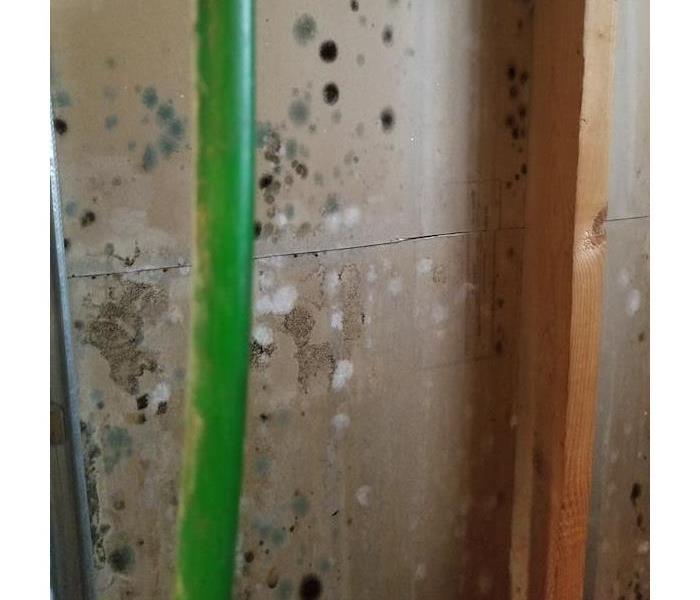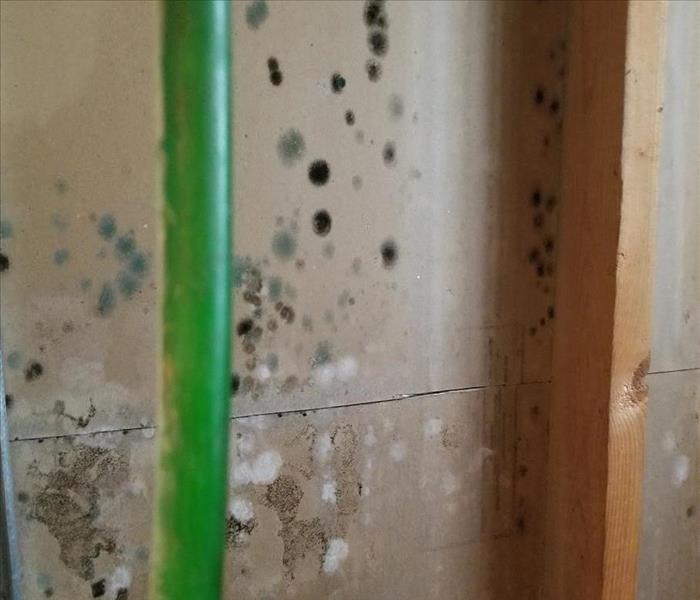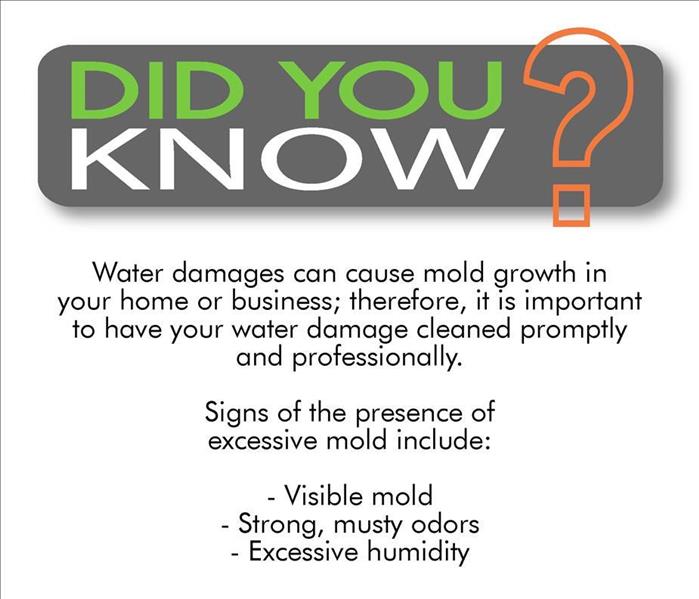Archived Mold Remediation Blog Posts
Managing Mold
6/4/2020 (Permalink)
When there's a water intrusion event like a leaky roof or leaky water line, mold can quickly become a problem in you home or business. Mold can cause health effects and can also cause significant damage to your property. Our Service Technicians have the training, protective gear, and specialized equipment necessary to handle any size mold problems at your property. Although every mold damage scenario is different and requires a unique solution, the general mitigation process remains the same, the following is a typical mold removal process.
Call SERVPRO of Southern Rockland County: A representative will ask a series of questions to help determine the necessary equipment, resources and personnel needed. An independent Air Quality/Environmental Professional may be needed to do the initial mold testing.
Inspection and Damage Assessment: Your property will be carefully inspected by SERVPRO for signs of mold using technology designed to detect mold and hidden water sources. Mold feeds on cellulose and water and can be hidden from plain view.
Mold Containment: Various containment procedures will be placed to prevent the spread of mold and isolate the contaminated area with physical barriers and negative air pressure to keep the mold spores from spreading during the cleanup process.
Air Filtration: Specialized filtration equipment captures microscopic mold spores out of the air. We have powerful air scrubbers and HEPA vacuums to prevent the spread of these mold spores while the mold remediation is in process.
Removing Mold and Mold Infested Materials: The mold remediation process depends on the amount of mold growth and the type of surfaces on which the mold appears. Antifungal and antimicrobial treatments will be used to eliminate mold colonies from forming. Removing and disposing of mold infested porous materials, like drywall and flooring, may be necessary to remediate heavy mold growth.
Cleaning Contents and Belongings: Restorable items such as furniture, decorative items, and curtains affected by mold can be cleaned. We use a variety of cleaning methods and techniques to clean and sanitize your belongings. Technicians are trained to remove odors with specialized fogging equipment.
Restoration: Depending on the level of mold damage, drywall, subfloors, and other building materials may be removed. Restoration may involve minor repairs or major reconstruction.
Our Professional Technicians have the training and equipment to mitigate mold in your home or business, don't hesitate to call (845) 400-4888.
Mold Cleanup and the Remediation Process
4/14/2020 (Permalink)
Does Your House have a Mold Problem?
When there's a water intrusion, like a roof leak from a storm or leaking water line, mold can quickly become a problem in your home or business. Mold can affect your health and can also cause significant damage to your property. SERVPRO of Southern Rockland County technicians have the training, protective gear, specialized equipment and cleaning products to handle your mold problem. Many of our Production Managers and Crew Chiefs are IICRC Certified, which is a highly regarded damage restoration industry standard.
Call SERVPRO, the mold cleanup and restoration process begins when you call. Our customer service will ask a series of questions to help determine the necessary equipment, resources, and personnel needed.
Mold Containment, we use various containment procedures that prevent the spread of mold. The contaminated area is isolated with physical barriers and negative air pressure to keep the mold spores from spreading during the cleanup.
Air Filtration, equipment captures microscopic mole spores our of the air. Technicians use powerful air scrubbers and HEPA vacuums to prevent the spread of these mold spores while the mold remediation is in progress.
Removing Mold & Mold-infested materials, is dependent on the amount of mold growth and the type of surfaces on which the mold appears. Antifungal and antimicrobial treatments will be used to eliminate mold colonies and help prevent new colonies forming. Removing and disposing of mold-infested porous materials, like drywall and flooring, may be necessary to remediate heavy mold growth.
Cleaning Contents & Belongings, we clean your furniture, decorative items, curtains, and other items affected by mold. A variety of cleaning techniques are used to clean and sanitize your belongings. Technicians will also remove odors and deodorize using fogging equipment.
Restoration, may include removing drywall, subfloors, and other building material depending on the level of mold damage. Restoration may involve minor repairs such as replacing drywall, painting, and installing new flooring. Or major renovations if the mold damage is extensive.
SERVPRO of Southern Rockland County is locally owned and operated—so we live and work here too and are proud to be part of this community. We are proud to provide quality mold remediation services in our Rockland County, New York community.
Mold From the Ordinary to the Unhealthy
2/20/2020 (Permalink)
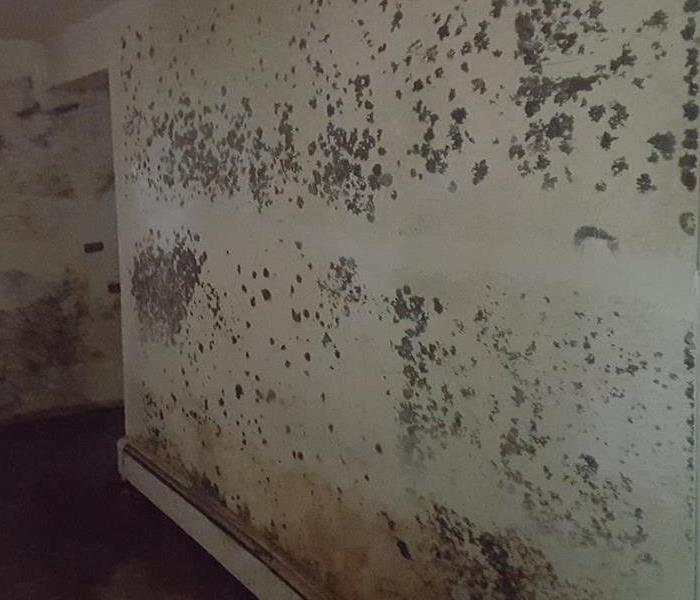 Mold spores cover interior basement wall.
Mold spores cover interior basement wall.
Service Technicians at SERVPRO of Southern Rockland County work hard to control and remove contaminants while protecting the health and safety of our clients and building occupants.
From the Ordinary: Fungi and mold naturally occur in our environment. In fact, over 100,000 kinds of fungi have been identified. Fungi produce some very useful results. Yeast is a type of fungi used in preparing breads, baked goods and other food products. An edible mushroom is simply a type of fungi, and lifesaving penicillin is a product of mold.
To The Unhealthy: Intrusion of water into your home or business can result in mold growth because the moisture levels inside are out of balance. Water intrusions and excessive moisture levels can result from storm damage, plumbing or equipment failures, long standing leaks, and poor humidity control. When these problems are not addressed immediately the resulting damage can present increased risk of harmful mold growth. If the humidity and moisture levels in a water-damaged environment are not promptly returned to normal, mold spores may grow and multiply. Organic materials found inside buildings such as wood, paper, drywall, and insulation provide a food sources for mold to flourish. Excessive mold growth can lead to indoor environmental conditions that can potentially pose a health threat.
Health Concerns: Health concerns may arise from excessive mold growth indoors. Concerns are more likely to arise for "at risk" people, which might include immune suppressed or compromised individuals, young children and individuals with chronic inflammatory lung diseases such as asthma and severe allergies.
SERVPRO of Southern Rockland County professionals are trained to handle various water and mold issues. Our initial focus is to stop the source of water feeding the mold. We then isolate the affected area using a negative air pressure chamber. Every mold damage scenario is different, and requires a unique solution, but the general mold remediation process stays the same.
The steps listed below illustrate our “typical” process:
- Emergency Contact
- Inspection and Mold Damage Assessment (may need to be done by an outside source)
- Mold Containment
- Air Filtration
- Removing Mold and Mold-Infested Materials
- Cleaning Contents and Belongings
- Restoration
Don't hesitate to give us a call at (845) 400-4888, we are locally owned and operated, to provide the service you expect.
Follow these Mold Safety Tips if You Suspect Mold in Your Home
2/14/2017 (Permalink)
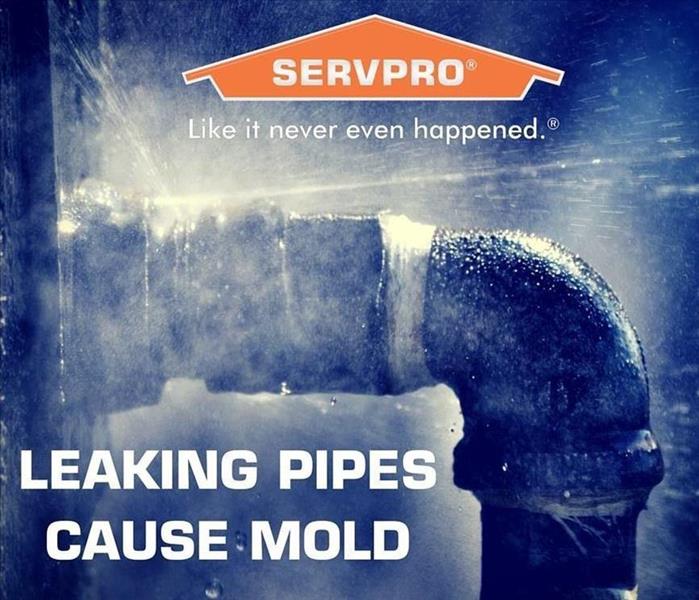 Be careful! Without proper training or tools, you could be spreading mold throughout your home.
Be careful! Without proper training or tools, you could be spreading mold throughout your home.
If you see visible mold, do not disturb it. You can inadvertently spread the mold infestation throughout your home. When mold is disturbed, the mold can release microscopic mold spores which become airborne and can circulate inside your home.
What To Do:
- Stay out of affected areas.
- Turn off the HVAC systems and fans
- Contact SERVPRO of Southern Rockland County for mold remediation.
What Not To Do:
- Don't touch or disturb the mold
- Don't blow air across any surface with visible mold growth
- Don't attempt to dry the area yourself
- Don't spray bleach or other disinfectants on the mold
About our Mold Remediation Services:
SERVPRO specializes in mold cleanup and restoration, in fact, it's a cornerstone of our business. Our crews are highly trained restoration professional that use specialized equipment and techniques to properly remediate your mold problem quickly and safely.
If you see mold, call SERVPRO today!
Does Your Home or Business have a Mold Problem?
8/16/2016 (Permalink)
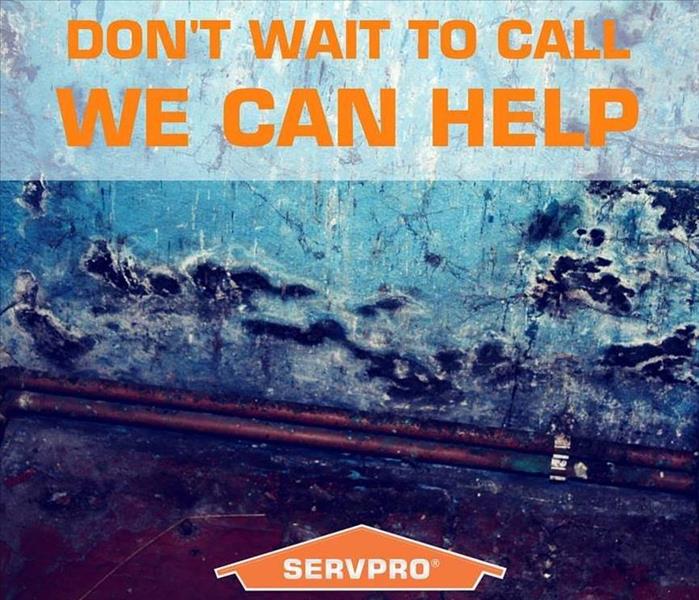 In Rockland County mold can spread through a home in as little as 48 hours.
In Rockland County mold can spread through a home in as little as 48 hours.
Microscopic mold spores naturally occur almost everywhere, both indoors and outdoors.
This makes it impossible to remove all mold from a home or business. Therefore, mold remediation reduces the mold spore count back to its natural or baseline level. SERVPRO has specialized mold removal equipment and trained technicians to get the job done right. Consider the following mold facts:
- Mold is present almost everywhere, indoors and outdoors.
- Mold spores are microscopic and float along the air and may enter your home through windows, doors, or AC/heating systems or even hitch a ride indoors on your clothing or a pet.
- Mold spores thrive on moisture. Mold spores can quickly grow into colonies when exposed to water. These colonies may produce allergens and irritants.
- Before mold remediation can begin, any source of water must be addressed. Otherwise, the mold may return.
- Mold often produces a strong, musty odor.
- Even higher-than-normal indoor humidity can support mold growth. Keep indoor humidity below 45 percent.
If your home or business has a mold problem, we can inspect and assess your porperty and use our specialized training, equipment, and expertise to remediate your mold infestation.
If You See Signs of Mold, Call Us Today - (845) 400-4888. Visit our Mold Web Page to learn about all our services.
Managing MOLD
6/16/2016 (Permalink)
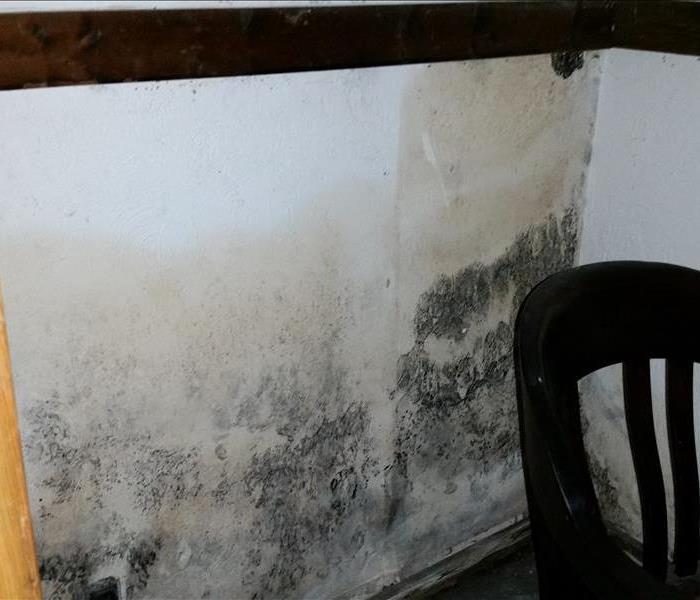 Mold Growth-Mold Remediation
Mold Growth-Mold Remediation
When there's a water intrusion, like a roof leak or leaking water line, mold can quickly become a problem in your home or business. Mold can cause health effects and can also cause significant damage to your property. Fortunately, SERVPRO has the training, protective gear, and specialized equipment necessary to handle your mold problem. Although every mold damage scenario is different requiring a unique solution, the general mold remediation process stays the same. The following steps illustrate a "typical" mold removal process.
CALL (845) 400-4888
The mold cleanup and restoration process begins when you call our office. A representative will ask a series of questions to help determine the neccessary equipment, resources, and personnel needed.
Inspection and Damage Assessment
Your property will be carefully inspected for signs of mold using technology designed to detect mold and hidden water sources. Mold feeds on cellulose and water and can be hidden from plain view.
Mold Containment
Various containment procedures will be places to prevent the spread of mold and isolate the contaminated area with physical barriers and negative air pressure to keep the mold spores from spreading during the cleanup process.
Air Filtration
Specialized filtration equipment captures microscopic mold spores out of the air. SERVPRO technicians utilize powerful air scrubbers and HEPA vacuums to prevent the spread of these mold spores while the mold remediation is in progress.
Removing Mold and Mold-Infested Materials
The mold remediation process depends on the amount of mold growth and the types of surfaces on which the mold appears. Antifungal and antimicrobial treatments will be used to eliminate mold colonies and help prevent new colonies from forming. Removing and disposing of mold-infested porous materials, like drywall and flooring, may be necessary to remediate heavy mold growth.
Cleaning Contents and Belongings
SERVPRO will clean your furniture, decorative items, curtains, and other restorable items. We use a variety of cleaning techniques to clean and sanitize your belongings.
Restoration
Depending on the level of mold damage, drywall, subfloors, and other building materials may be removed. Restoration may involve minor repairs such as replacing drywall, painting, and installing new carpets; or it may involve major repairs such as the reconstruction of entire rooms within your home or business.
No matter how big or small your mold problem is SERVPRO will make your mold problem "Like it never even happened."
Freezing Pipes may lead to Water and Mold Damage
1/21/2016 (Permalink)
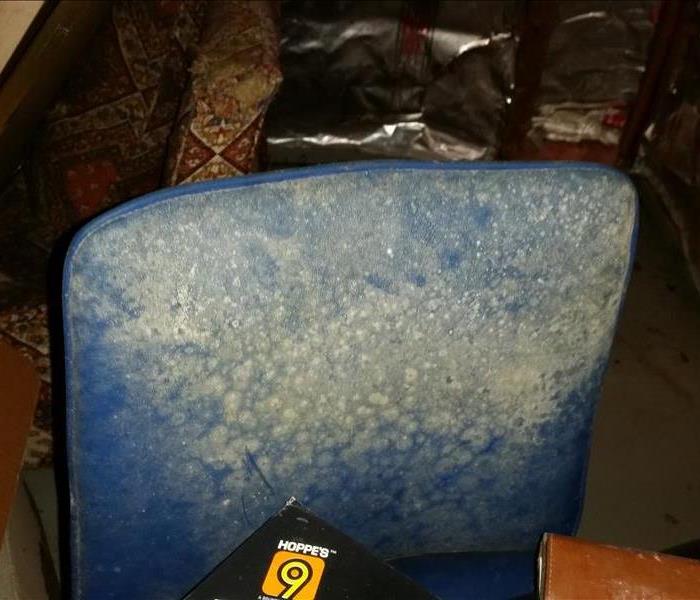 Mold damage from a frozen pipe and water disaster.
Mold damage from a frozen pipe and water disaster.
Mold can quickly become a major problem. After a water damage event, an infestation can spread throughout your home in just 48 to 72 hours. Molds come in multiple colors. Most have a musty odor and appear like blotches or spots. Since there are no clear standards for determining acceptable quantities of mold, there's no need to identify the specific type of mold. Instead, simply treat all molds as potential health threats and remove promptly and safely. Call SERVPRO your professional mold remediation company. We can make mold disasters "Like it never even happened".
Did You Know? We offer Professional Mold Remediation Services
11/19/2015 (Permalink)
Mold can quickly become a major problem. After a water damage event, an infestation can spread throughout your home in just 48 to 72 hours. Molds come in multiple colors. Most have a musty odor and appear like blotches or spots. Since there are no clear standards for determining acceptable quantities of mold, there's no need to identify the specific type of mold. Instead, simply treat all molds as potential health threats and remove them promptly.






 24/7 Emergency Service
24/7 Emergency Service
